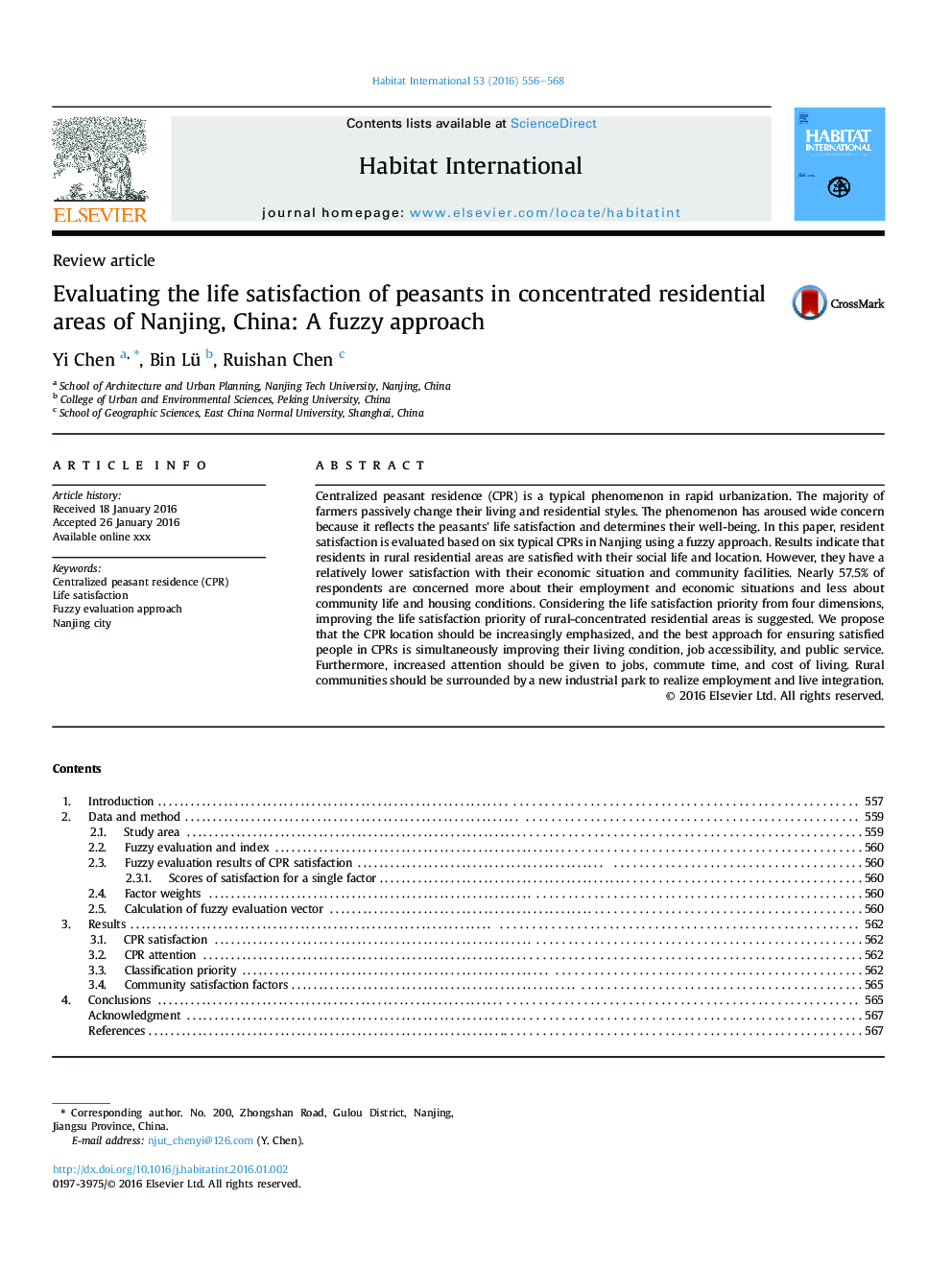| Article ID | Journal | Published Year | Pages | File Type |
|---|---|---|---|---|
| 7455786 | Habitat International | 2016 | 13 Pages |
Abstract
Centralized peasant residence (CPR) is a typical phenomenon in rapid urbanization. The majority of farmers passively change their living and residential styles. The phenomenon has aroused wide concern because it reflects the peasants' life satisfaction and determines their well-being. In this paper, resident satisfaction is evaluated based on six typical CPRs in Nanjing using a fuzzy approach. Results indicate that residents in rural residential areas are satisfied with their social life and location. However, they have a relatively lower satisfaction with their economic situation and community facilities. Nearly 57.5% of respondents are concerned more about their employment and economic situations and less about community life and housing conditions. Considering the life satisfaction priority from four dimensions, improving the life satisfaction priority of rural-concentrated residential areas is suggested. We propose that the CPR location should be increasingly emphasized, and the best approach for ensuring satisfied people in CPRs is simultaneously improving their living condition, job accessibility, and public service. Furthermore, increased attention should be given to jobs, commute time, and cost of living. Rural communities should be surrounded by a new industrial park to realize employment and live integration.
Keywords
Related Topics
Social Sciences and Humanities
Social Sciences
Development
Authors
Yi Chen, Bin Lü, Ruishan Chen,
